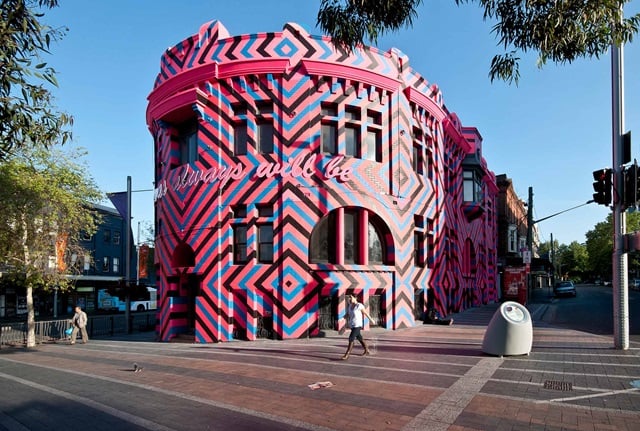


The Glebe War Memorial was commissioned in 1921 by the residents of the Glebe area to honour the memory of local soldiers who served in World War 1.
Artwork description
The memorial is in the form of a shrine, consisting of a stone edifice with marble facings, a marble dome and marble broken pediment, including 2 portrait busts on either side. On the left a soldier and on the right a sailor, with an angel on the top.
The interior chamber is fashioned in white marble listing the names in gold inscription of 174 soldiers from Glebe who died in World War 1. There are various bronze motifs, 2 guard lights and a cupola topped with an orb providing a solid Victorian quality to the structure. The orb has a bronze Victoria Cross attached to it with a clasp, crowning the structure.
The memorial was installed in the south-east corner of Foley Park in 1922 and has an early Victorian architectural style similar to the nearby St Johns Church.
The monument was designed by Glebe architect and prominent anti-conscriptionist William Martin (1852–1937).
Conservation



The Glebe War Memorial was extensively restored from 2013–2015.
The restoration work was complex as the monument is made up of numerous materials including sandstone, marble, trachyte, bronze, gilded lettering, intricate plaster work, wrought iron detailing and brickwork. All elements were repaired and cleaned with missing sections replaced.
The work included resculpting the sentinel angel and the 2 marble busts on either side, one of a soldier and the other of a sailor. Highly skilled stonemasons carried out this meticulous work by hand.
A bronze Victoria Cross originally attached with a clasp to the granite orb at the top of the monument disappeared decades ago. The Victoria Cross symbolises the highest military decoration for valour ‘in the face of the enemy’ for Australian servicemen and women.
In 2015 a replica of the missing Victoria Cross and clasp was installed. Specialist metalworkers took a silicon rubber mould from an identical cross that sits atop the Mascot War Memorial, which was designed by the same architect. A replica was then cast in a Sydney foundry.
Team
- Conservators: International Conservation Services
- Restoration contractors: Traditional Stone Masonry
- Foundry: Crawford’s Casting
- Structural engineers: Mott Macdonald
- Lighting engineers: Lighting, Art and Science







